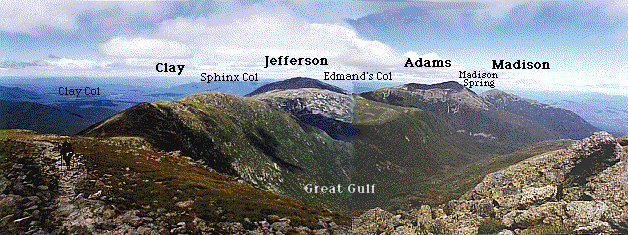- Karen Cummings
The Land of Many Uses - The White Mountain National Forest
The White Mountain National Forest (WMNF) encompasses more than 730,000 acres in Maine and New Hampshire, and at its heart lies Mt. Washington and the Presidential Range. Also within its boundaries are four major mountain notches, innumerable lakes, streams and ponds and the largest alpine tundra region in the East.

While its farthest reaches remain remote and unscathed, much of the forest is highly accessible. The WMNF is within a day's drive of 62 million people in the populous Northeast, and use of favorite locations in the region has increased astronomically in past years. Of 154 National Parks, Forests and 19 Grasslands in the U.S., the WMNF ranks 125th in total area, but is 20th in recreational use, which exceeded 3 million visitor days in 1977. "We're a relatively small forest," states Ken Sutherland, recreation specialist in the WMNF Supervisor's Office, "but our use is tremendously high and continues to grow along with tourist industries, at a rate of 6-12% a year."
It is important to note that the land, whose use is regulated by the U.S. Forest Service, is not a national park, but a national forest. Parks are established primarily as recreation grounds, while the latter are managed for multiple use. In addition to, and many times in the midst of, a variety of recreational uses, the WMNF also must continue to provide a quality supply of wood products for a thriving industry, abundant pure water, wilderness and propagation of wildlife species. The only exception to the multiple use posture are several small scenic areas, and the Great Gulf and the Southern Presidential district are two regions designated by Congress as wilderness areas. Timber activities and mechanized vehicles are not permitted in these regions.

With so many citizens and interest groups vying for the use of a relatively limited resource, conflict is inevitable. Access to the mountains is considered by many to be their right. Organizations like the Appalachian Mt. Club had built trails in the region before the Forest Service or the WMNF were even established. While many of these same groups are committed to the protection of wilderness values, they also strive to coexist with timber interests, which depend on the forest as a major source of their livelihood. Others, advocates of a pure backcountry experience, wish to remove the imprint of man and return the area to its natural state.
Increasing intensity of use in the last decade resulted in erosion, loss of vegetation, and water pollution, and forced the Forest Service to assume a position. The result was the designation of particularly vulnerable locations as Restricted Use Areas, in hope of reducing the impact of hiking and camping, and to assist nature in rehabilitating itself. "Activity in the WMNF is taking place on a very small percentage of actual acres," Sutherland explains. "Cluster camping is a natural impulse, to a certain extent, but if we can spread people out, there will be less of an impact problem."
Meanwhile, long term land use planning continues. Several articles in this issue of the Mountain Ear explore the complex nature of backcountry management, and the problems inherent in trying to determine its future. Penny Deans looks at RARE II, an attempt by the government to resolve the controversy among various groups as to the eventual designation of certain tracts as wilderness areas. Other piece explain the difficulty of policing the woods, as well as ongoing efforts to protect people from themselves in the backcountry.
Ken Sutherland hesitates to guess about the years to come because of abrupt changes that have occurred unforeseen in the past. "No one anticipated the snowmobile or its impact," he says, "or the technological advances in camping gear that made the wilderness so accessible. You used to have to carry 100 lbs. of equipment for a trip into the backcountry." Perhaps the only certainty is that use of the White Mountain National Forest is sure to increase. "We receive more visitors every year, " explains Verland Ohlson, Head Ranger for the Saco District, "and the pattern is growing. I'm really encouraged how much less vandalism and littering there is, though," he continues. "The forest is really being treated better."
